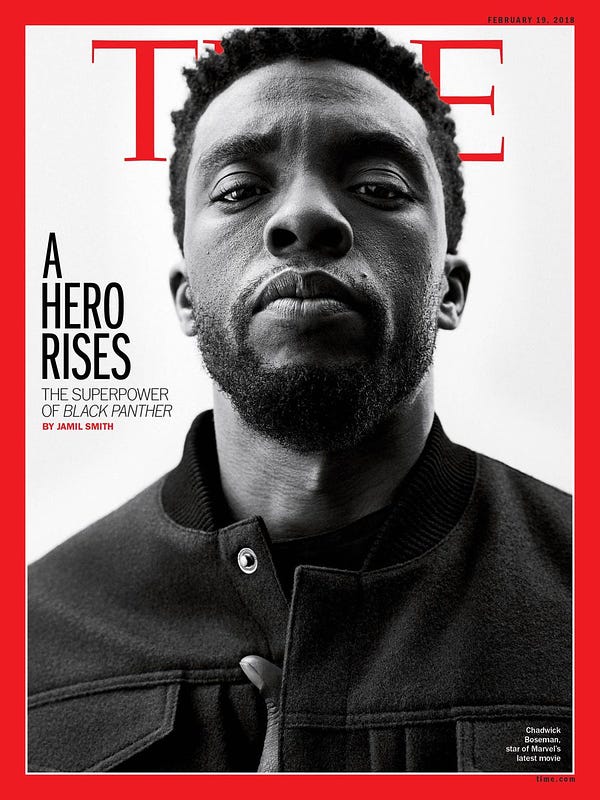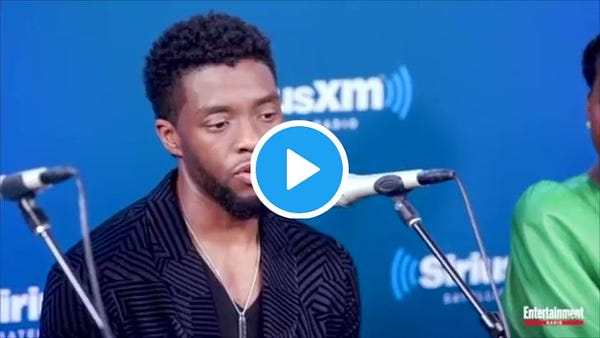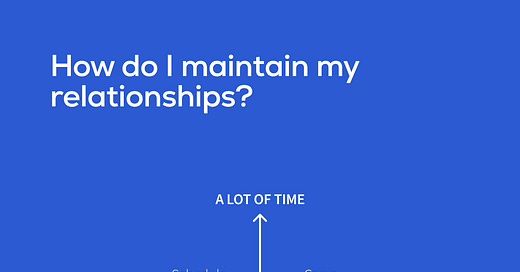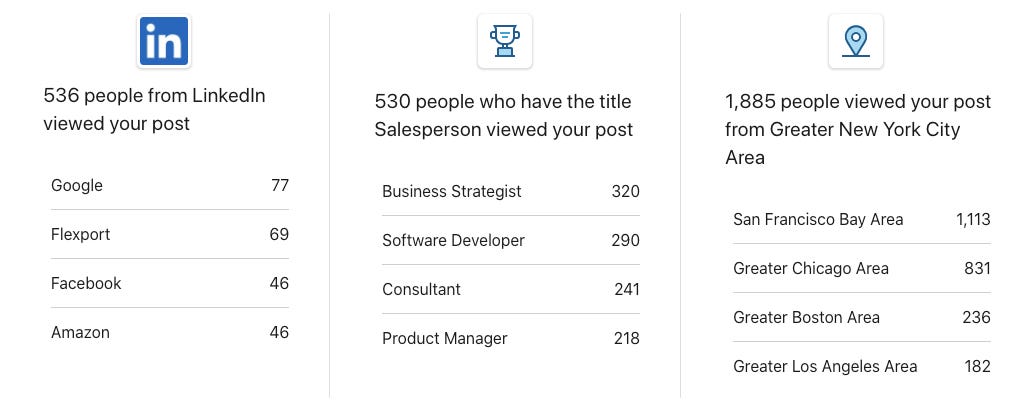How do I maintain my relationships?
Rest in Power, Chadwick Boseman; We need each other now more than ever
This was a brutal week. There’s just no other way to say it. I sit here on a rainy Saturday morning dumbfounded.
I’m sad. I’m angry. I’m frustrated.
I’m numb, too.
Jacob Blake. Shootings in the streets. A propaganda-filled and harmfully dishonest Republican National Convention. A burned down Chabad at the University of Delaware. Hurricane Laura. 700,000 Americans without power. California wildfires. 1.3+ million acres burned. Coronavirus. 183,000+ Americans dead. Chadwick Boseman. Cliff Robinson. This incomplete list could fill an entire year. Instead, it’s just seven days in 2020. None of these things are new to us. We’ve been grappling with systemic racism, climate change, coronavirus, and antisemitism for a long, long time.
That said, familiarity with these issues doesn’t make them any easier to handle.
Take care of yourself. This is merely the news happening at the national level—we all have our own stresses, obstacles, and anxieties. Working from home isn’t getting easier. Not seeing friends and family hurts. We still long for our old routines. It’s a week like this that takes a serious toll on your mental health. Reach out to someone you care about. Pick up the phone. Go for a walk. Send that text message.
We may be separated, but we’re not alone.
Every Sunday I try to write something useful, actionable, and valuable. I hope today’s post is no exception.
Let’s get into it:
There are two types of people in this world: Marvel Cinematic Universe (MCU) stans and those who aren’t. Chadwick Boseman is a superhero to both.
When Chadwick jumped into the MCU as the Black Panther in Captain America: Civil War, it felt like a breath of fresh air. He wasn’t just another hero with fancy gadgets, enhanced abilities, and an awesome suit. There was something different about Chadwick. His portrayal of Prince (soon to be King) T’Challa in Civil War exuded confidence, culture, and class. T’Challa elevated the MCU to be more than about fighting extraterrestrial bozos with a grudge. It shifted to be about family, honor, tradition, and growth. Above all else, his character added the heart and soul the universe needed.
Black Panther was so powerful I had to see the film twice in theaters. I’m obsessed with Marvel—many of you can vouch—and this movie is the only one I’ve seen twice in theaters. The first time, I was lost in a state of pure shock. How something so standard (another superhero movie where the good guys win at the end) feel so fresh?


The second time I saw the film, it was to really feel it. Already knowing the plot allowed me to zone in—to understand what it meant to be Wakandan and to understand the culture. I wanted to be transported and mesmerized again. And, finally, I just wanted to spend more time with Chadwick Boseman.
It pains me that we’ve all run out of time.
If you fall into the second group of people—and the MCU isn’t your thing—Chadwick Boseman is still a superhero.
He fought harmful barriers in Hollywood.
He played transformative and iconic Black characters aside from the Blank Panther. Though I haven’t yet seen it (that will be changing soon), my dad raves about his performance as Jackie Robinson in 42—he’s seen it seven times.
Chadwick supported children with terminal cancer while fighting colon cancer himself:


Chadwick’s untimely passing should give us all pause. Everyone has unadvertised adversity. Everyone’s time on this planet is fleeting and short. We should spend it making an impact, inspiring others, and being there when in need. Chadwick (and the characters he played) represented the best of that. Rest in power.
Today’s post is about ensuring we correctly use this moment of reflection. We don’t know when those we care about will be taken away from us. Thus, it’s important to nurture valuable relationships over time, allowing them to be the shining lights of your life. However, as we approach month seven of social distancing, this is harder than ever. While we feel more connected to our screens, we feel increasingly disconnected from each other.
Maintaining your relationships should feel natural. There’s no need for a personal CRM or calendarized outreach reminders. Relationships should be human, not robotic.
The framework below will help you sort through the right mix of interactions needed to develop your relationships. Days in 2020 are difficult, and we need each other now more than ever.
On the x-axis, we have the type of relationship. Is the person a professional connection, family, or a friend? The relationship you have will dictate the interactions you pursue.
On the y-axis, we have the time commitment. Simply put, this is the amount of time the given interaction will (and should) take. Every relationship is different. Some require more light, frequent touchpoints. Others require deep, but infrequent ones.
Understanding the Grid
Effectively maintaining relationships requires prioritization and finesse. What this grid will help with is understanding how to use different touchpoints—both big and small—to maintain relationships of all strengths. It’s up to you to know which relationships require more meaningful conversations and which require lighter touchpoints. It’s also up to you to know how often you should be engaging with each of your relationships.
So, think of this grid as you would air-conditioning: The AC could be off, on low, medium, or full-blast—it depends how hot it is outside. The same is true here. Using this grid properly means working both above and below the x-axis. It’s up to you to discern the correct intensity level (or the outside temperature) for each relationship.
Carve
The relationship is personal, and the interaction takes a lot of time. It’s in the Carve quadrant where time slips away—you can get lost on chatting for hours at a time. These conversations can be scheduled or impromptu—the bigger thing to recognize is two-fold:
They rarely have an end time set before beginning.
They require actually speaking. Texting doesn’t cut it.
You don’t treat calling your parents like you would a Monday morning team meeting. It doesn’t run from 9 am to 10 am. It usually runs from 6:11 pm til who knows when. The medium is up to you. It could be a socially distanced walk, FaceTime, or plain old phone call. For me, I find that I like to carve out time for these interactions once (sometimes twice) per day, five days a week. These conversations with family and friends are deep, so that can mean they are exhausting. Thus it would be a challenge to have more than two on a given day. In terms of setting the right cadence for your relationships, here are some rough benchmarks I try to hit:
Call your parents 3-4 times per week.
Have one-on-one conversations with each of your closest friends once every two or three weeks (or more as needed).
Have a handful of big group conversations with your closest friends at once—it’s important to try and rekindle the group dynamic that’s normally experienced through in-person activities like dinner outings, birthday parties, and nights out.
Every now and then, call other friends outside of your immediate circle that you’d normally see in pre-coronavirus times that you haven’t spoken to in a while.
Having deep conversations with friends should feel natural. There isn’t a set cadence I manage. I just follow my mood—I’ll open the Messages app on my phone and scroll until I find someone I want to chat with. Then, I’ll call or a FaceTime unannounced. If they’re free, they’ll answer. If not, they’ll text back and we find a different time. During these calls, be on the court. Don’t multitask. Ask meaningful questions. Go deep. Listen. Repeat.
Share
The relationship is personal, and the interaction doesn’t take a lot of time. These are quick “thinking of you” moments that spark small phone-based interactions. It could be a simple text, but sometimes it can feel hard to break the ice if you haven’t spoken in a while. Sending memes, tweets, pictures, and news stories to your friends is an easy ice breaker. I find myself sending tweets to my friends all day. This allows me to blend my social media addiction with managing my relationships. Too often we are passive readers of our feed and forget to engage with the content we follow. Another quick, but meaningful interaction can be privately responding to shared social media content. Instead of just tapping through all of your unseen Instagram stories, for example, make a goal to reply directly to two or three different people each time you open a round of stories. If you don’t feel comfortable directly replying to a friend you follow, ask yourself if this person is even worth following anymore? Again, this entire framework is anchored on prioritization and finesse. Our time is short. If it would “feel weird” to send something out of the blue to someone, then maybe it’s not a relationship you should be working to maintain during a pandemic.
Schedule
The relationship is professional, and the interaction takes a lot of time. Simply put, this quadrant is reserved for 1:1 video chats or calls with your professional connections. These conversations have an agreed-upon objective and length before the calendar invite is sent. They typically last a half-hour and follow a repeatable pattern:
Whoever scheduled the meeting shares what’s been up with them (professionally and personally) since the last conversation.
The other person does the same.
The main purpose of the meeting is discussed.
The main purpose could be anything from industry questions, recruiting help, career move guidance, partnership opportunities, etc. For example, I recently caught up with an old LinkedIn colleague a few weeks ago. He had reached out to provide feedback on Gridology and asked if I had time to catch up. We emailed back and forth, found a time, set up a Zoom, and caught up for the first time in three or so years. It was great.
Update
The relationship is professional, and the interaction doesn’t take a lot of time. Interactions in this quadrant serve one of two purposes:
Spark an interaction in the Schedule quadrant.
Inform your connections of major professional news at scale.
For number one, here’s an example. When I was looking for employment a few months ago, I sent out several messages (they take 10-15 minutes to write) to those in my professional network who I thought could help. I informed them of what was going on—I had left LinkedIn and my MBA program was delayed seven months—and wanted to schedule some time to chat about what’s been going on in their role since we last spoke and if there were any opportunities for me to contribute. This approach led to several calls on the calendar. It’s actually how I landed my job at Sounder.
For number two, try spending 10-15 minutes crafting a meaningful update on LinkedIn about a professional milestone. This could be changing jobs, starting or completing a project, beginning a new degree program. The LinkedIn post gets the news out at scale and can lead to inbound inquiries of your time. Here’s the post I shared to announce I was leaving LinkedIn, starting Gridology, and pursuing an MBA:
More importantly, check out the stats on this post (it had 11,000+ views):
Not only did my immediate professional network learn of the news, but many outside of my network also got the memo too. Plus, many professional connections reached out to learn about my decision and to schedule time with me.
Grid Shortcomings
This grid requires you to discern how much time you should be spending on each relationship. It’s up to you to figure out which relationships require lots of time. Each person in your life—personally or professionally—should add some type of value. Focus on spending time cultivating the relationships that add the most personally or professionally.
This grid doesn’t help you figure out the correct interaction ratio for your professional and personal relationships. Should you be having more deep chats than quick texting conversations? Should you be sharing more memes than Zoom passcodes? That’s up to you to discern based on your own knowledge of each of your relationships.
“In times of crisis, the wise build bridges while the foolish build barriers.” —King T’Challa
I hope this post can help us all build and maintain more bridges. As we all face inordinate amounts of anxiety and stress, we must remember we are not alone. We have each other, and we need each other now more than ever.
Life’s only as confusing as you let it be,
Ross
If you enjoyed today’s Gridology post, please consider forwarding it to your friends, family, or colleagues. As always, please reply to this note or find me on Twitter if you have any feedback, have ideas for a post, or want to collaborate.








